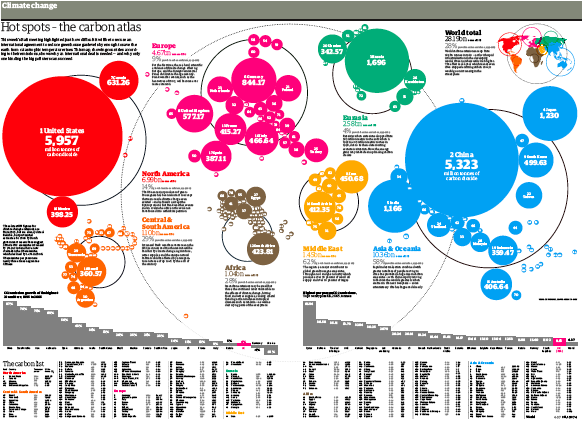Friday, March 28, 2008
GOING GREEN ISN’T ALL ABOUT THE CAR YOU DRIVE
Here are a few quotes from the article that will probably surprise you and you can use the link below to read the whole article.
“… an estimated 30 percent of the earth’s ice-free land is directly or indirectly involved in livestock production, according to the United Nation’s Food and Agriculture Organization, which also estimates that livestock production generates nearly a fifth of the world’s greenhouse gases — more than transportation.”
“… a study last year by the National Institute of Livestock and Grassland Science in Japan estimated that 2.2 pounds of beef is responsible for the equivalent amount of carbon dioxide emitted by the average European car every 155 miles, and burns enough energy to light a 100-watt bulb for nearly 20 days.”
http://www.nytimes.com/2008/01/27/weekinreview/27bittman.html?em&ex=1204606800&en=6823b9a5c8f1c620&ei=5087%0A
Wanda Shapiro
Tuesday, March 11, 2008
Carbon Atlas
Wednesday, March 5, 2008
How to green your electronics
We all love our electronic devices (for the most part)! There are many ways you can be green with your electronics. The key is to know what tech to get, how to use it best, and what to do with it when its useful life is done.
Here are a few tips:
1. Go rechargeable
Only a fraction of batteries are recycled. Look for electronics that are rechargeable.
2. Kill vampire power
To make sure you aren't wasting energy, pull the plug on devices when not in use. There are also a number of "smart" power strips on the market that sense when electronics are turned off
3. Buy with energy in mind
Doing research on different technologies and their respective energy consumption can save you a lot in the long run. For example, LCD TVs use much less energy than plasmas. The Energy Star site will help you identify energy-saving electronic devices as well.
4. Make it a short circuit
So, you just bought an iPhone. What should you do with the old phone? Whatever you do, don't just throw it in the trash. There are plenty of organizations and charities that recycle and reuse old electronics.
5. Bright idea: The solar charger
There are an increasing number of options for on-the-go solar power. From handheld to backpack power, solar chargers now come in a spectrum of types for juicing up phones, PDAs, Bluetooth headsets, iPods, and laptops.
6. Look for EPEAT
EPEAT (electronic product environmental assessment tool) is a new attempt at environmental certification for computers (CPUs, monitors, and notebooks). Released in early 2006, only a limited number of products have been registered with EPEAT so far, however, look for this certification to pick up steam in the near future.
Tatiane Perazzo
